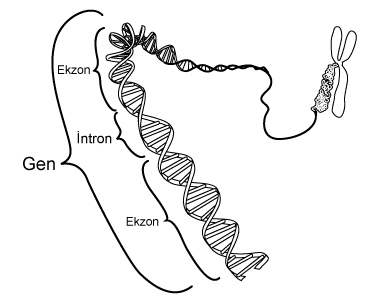A Baby Boy Born in Greece With DNA from Three Individuals

This image shows the coding region in a segment of eukaryotic DNA
By Neucrad Health Stuff April 29, 2019
On April 9, 2019, in a historical achievement of Medical Science, a 32-year-old mother gave birth to a baby boy using DNA from three people at the Institute of Life in Athens. A team of Greek and Spanish doctors used the DNA-switching technique to give birth to the 2.9-kilogramme baby as the mother was infertile and have already undergone four unsuccessful attempts of IVF cycles. Here, doctors took the father’s sperm, the genetic material of the mother, and a donor’s egg for this medical miracle. They transferred the genetic material of the mother to the donor’s egg for a successful pregnancy. However, the baby also has a tiny amount of genes from the donor as a vital cell organelle- mitochondria has its own DNA.
What are the doctors of the Institute of Life in Athens saying about this rare medical achievement?
Dr. Panagiotis Psathas, president of the Institute of Life in Athens was very happy with this exceptional fertility treatment and stated, “We are very proud to announce an international innovation in assisted reproduction, and we are now in a position to make it possible for women with multiple IVF failures or rare mitochondrial genetic diseases to have a healthy child.” He further added that with this process, “A woman’s inalienable right to become a mother with her own genetic material became a reality.” The doctors at the Institute of Life in Athens are also conducting a trial on 24 other women who are either infertile or have rare mitochondrial diseases preventing them from becoming a mother with their own egg. They have already successfully developed eight embryos which are ready for implantation.
When was the DNA-switching technique previously used in Medical Science?
The revolutionary DNA-switching technology was previously used in Mexico in 2016 where doctors delivered a baby for a family with mitochondrial complications in mother. In 2017, doctors incorporated a similar technique in Ukraine for another family where the mother had unexplained infertility. A medical team of Newcastle in the United Kingdom pioneered this new technology of in-vitro fertilisation (IVF). They developed the technique of donation of mitochondria to mothers having a rare mitochondrial disease which they do not want to pass on to the child. In February 2018, the Government of the United Kingdom permitted the birth of babies having three people’s DNA. However, many Scientists and experts are raising ethical questions about DNA-switching technology, and there is an on-going debate on whether the procedure should have been undertaken or not.
A Brief Insight About the Structure of Cell
When we are talking about mitochondria and DNA, let us throw some light about the constituent of the cell for a better understanding of this procedure. Every human cell is made up of a few important cell organelle including mitochondria, endoplasmic reticulum, Golgi apparatus, lysosomes, and nucleus. They all remain bounded by a semi-permeable cell membrane. Out of these cell organelles, the nucleus contains the majority of the genes, and a minute quantity of genetic material is also present in mitochondria. The function of genes is to pass on our traits and characteristics to our progeny or children. They are the functional unit of heredity. These genes are made up of DNA varying in size from a few hundred DNA bases to some giant genes having approximately 2 million DNA bases. Scientists have found out that human has about 20,000 and 25,000 genes in its cells. We have two copies for each gene in our cells inherited from both of our parents. Though most of these genes are similar in every person, about 1 percent of the genes is different. They are known as alleles and contribute to our unique physical features and characteristics.
Image: Illustration purpose only, Credited to Noumenontalk, CC






